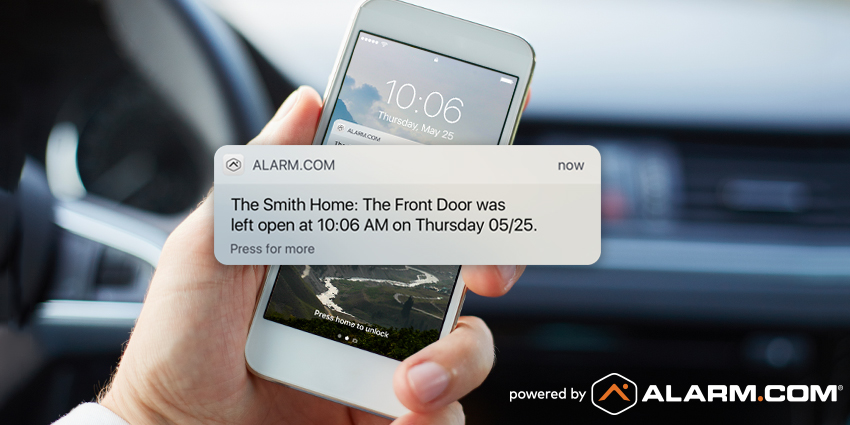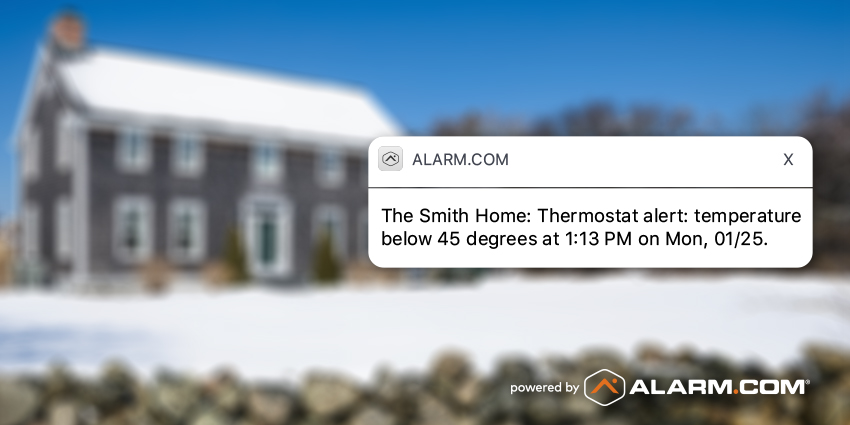One of the most common reasons people install a security system is to help them keep watch over their pets. Ironically enough, some people also believe that they do not need a security system if they have a pet — especially if that pet is a large dog. Of course, both a fire or burglary can turn dangerous and even deadly for pets left home alone. Having pets in the house makes a security system even more necessary, not less. We often take specific steps while designing a security system to maximize pet safety. In this week’s post, we will discuss what we do to add security for your furry (or feathery, or even slimy) members.
Have Your Security System Monitored
We discussed this issue in depth in last week’s post, and the remaining pet safety tips in this post rely on a monitored home security system. Having pets at home while you are away adds even more urgency to taking this important step. We recommend using a cell dialer for your monitoring. Using a cell dialer ensures that your security system will be able to contact the central station even when the phone lines are down. Burglars often cut the phone lines as a precaution before breaking into a house, so this is an important feature.
Adding interactive services allows you to control your security system remotely from a phone or computer, and also provides you with a constant, direct connection to your security system. Our own cell dialer, powered by Alarm.com, includes interactive capabilities right off the bat. This cell dialer also acts as a smart home hub. Some of the following suggestions work even better when combined with these smart home capabilities. We will point these extra features out to you as we go.
Use Contact Sensors to Track Pets

Worried about leaving a door open and letting your pet roam? Consider using contact sensors and Alarm.com notifications to make sure you keep your pets safe inside your home.
We briefly discussed using contact sensors to make sure pets stay in the yard in our blog post 5 Unconventional Uses for Contact Sensors. Adding contact sensors to exterior gates is a great way to make sure that pets do not escape the yard without you knowing. However, this concept does not have to begin and end with contacting gate doors in the yard. Adding contact sensors to the doors that add door notifications non-pet friendly areas of the house is a simple way to greatly increase pet safety in your home.
When used with Alarm.com, you can track these doors’ openings and closings whether the security system is armed or disarmed. For example, if you need to keep the cat out of the basement, you can receive an alert if you fail to close the basement door, or if someone opens the door after it has been closed. Tracking the areas that your pets may have access to helps you keep your pet safe. Of course, taking advantage of this option also provides extra peace of mind. No longer will you leave the house wondering if you forgot to shut a door or lock a gate that helps keep your pet safe.
Install Cameras to Watch Your Pets
Cameras are a great way to add security to your home in case of a break-in. We discussed cameras as a way to catch thieves in our 7 Tips to Improve Home Security for New Homeowners. The security that a camera system adds, however, is not limited to keeping burglars at bay. Many of our customers use cameras to track their pets. Cameras provide a live look-in to a house at any time, so you can always check on your pets’ movements and safety within your house.
When used with Alarm.com, you can also set up alert notifications to show you real-time clips of motion in rooms with a camera. You can also use this concept to track pet-sitters as well as pets. While on vacation, you may expect someone to show up to feed your pets or let them outside. Your cameras will send you a video when the sitter arrives. You can also set an alert in case your cameras did not detect motion when expected. If your pet-sitter does not show up before a deadline, your camera will let you know. If you continue to receive “no-show” alerts, you may want to find a new sitter!
Add Monitored Smoke and CO Detection to Your Security System

A wireless relay, such as the Firefighter relay by Interlogix, allows you to monitor your smoke alarms without adding new detectors around your house.
Monitored smoke and carbon monoxide detection is one of the most popular reasons people purchase home security. However, a surprising number of customers do not take advantage of this feature. Adding this detection becomes even more important when factoring pet safety into your security system design. If a fire starts while you are away, your pet will be trapped in the house. This makes it extremely important that you have smoke alarms that create a central station response upon activation.
Adding monitored smoke detection is easier now than ever. Consider using a wireless relay device to listen for the sound of your smoke alarms. The pictured contact, known as the “Firefighter,” is the newest and most efficient way to monitor your smoke alarms. When you install this device within a foot or so of an alarm, it will send a signal to your security system if that smoke alarm sounds.
In most cases, one Firefighter device can effectively monitor all of the smoke alarms in your home. You may remember from our “Residential Smoke Alarm Requirements in Massachusetts” post that houses built after 1975 must have interconnected smoke alarms. This means that if one smoke alarm sounds, the other smoke alarms activate as well. If your home has interconnected smoke alarms, one relay device will monitor all of your alarms. If any alarm detects smoke, the alarm next to the relay will eventually sound. This will create a response from your security system and a fire station response as well. In a situation where your pet is home during an emergency, this could save your pet.
Use Environmental Sensors to Ensure Pet Safety

Smart thermostats, such as the one made by Alarm.com, can let you know if your home’s temperature drops too low for your pet’s comfort.
Environmental sensors are a great way to ensure your pets remain safe and comfortable while you are away. Most people associate security systems
with burglar and fire prevention. However, tracking and controlling the environment adds even more comfort and security to your home. If you have pets at home, this comfort and security also creates extra pet safety. For example, if a water pipe freezes or bursts and you do not know about it right away, this can endanger your pet. Freeze and flood sensors will alert your security system to these situations. As a result, you will receive a phone call right away. A temperature sensor will also make sure that temperatures stay within a comfortable range for your pet. For example, you can make sure that you know if your home’s temperature falls below 40 degrees or rises above 80 degrees.
Finally, adding a smart thermostat to your security system gives you real-time control of the environment in your home. Now you can always check in on — and change — your home’s temperature. You can also set an acceptable temperature range for your home. If the temperature falls outside that range, you will receive an alert on your phone. This real-time information and control takes the guesswork out of keeping your pets comfortable at home.
How Do I Start?
A security system provides a powerful extra layer of security for your pets. However, perhaps you had a security system installed before getting pets and need to add some additional security equipment. Or perhaps you do not have a security system at all, and just want to make sure that when your system is installed you take the proper steps to make pet safety part of the initial design. No matter the case, we will be happy to help. If you have questions about adding pet safety features to a new or existing home security system, feel free to contact us. We provide a free site survey to see what dangers your pet may face, and what we can do to prevent them.
